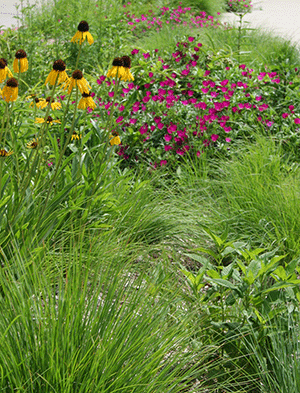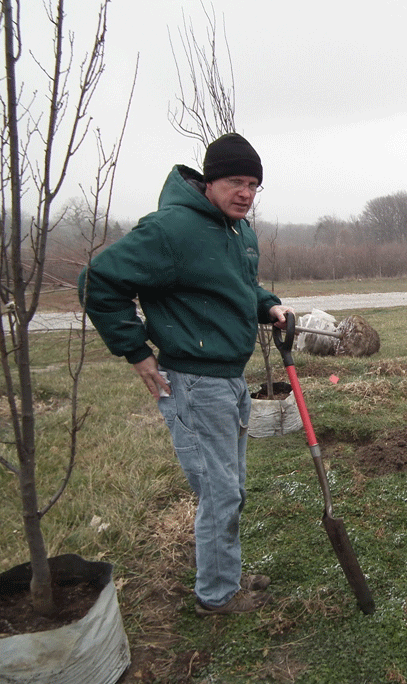We seldom think of it this way, but our home landscape is part of the wider ecosystem. With the human-controlled landscape continuing to grow, its impact on biodiversity—for good or for bad—is also growing. Since our landscape planting and management choices have wide-reaching consequences, they need to be good ones.
Why does biodiversity matter?
Nature has a wide range of actors, and even the smallest has a role to play in an amazingly complex, balanced and effective system that affects crop pollination, pest control, carbon storage and cycling of nutrients and water. When any part is missing, resiliency and effectiveness decrease and we have to work to fill in the gap.
We seldom act as effectively as nature, and our actions often cause unintended harm. Control of a common garden pest, the aphid, is a good example. If a pesticide is applied to kill the aphids, their many predators, including birds, ladybugs and lacewings, are likewise harmed. Since aphids reproduce so rapidly, their populations often rebound before the natural controls, and the problem may be worse than at the beginning.
Tolerate a Few Weeds
For the homeowner who wants a healthier landscape, there are many options. First of all, increase plant diversity, both in species (mostly native) and plant type—herbaceous, shrubs, understory and large trees. Allow a few “weeds” such as clover, plantain and milkweed to find a home here and there. A diverse plant list provides habitat for a wider range of beneficial critters. Many of our home landscapes consist of non-natives like daylily, barberry, yew, Callery pear and turfgrass. They may be readily available, but they look like an empty plate and a “no vacancy” sign to most native fauna.
A significant reason to use more natives is their evolution with the local plant and animal community, our soils and our weather, allowing them to thrive without chemical treatments and other inputs. Synthetic fertilizers and pesticides often interfere with natural processes, especially in the soil ecosystem. Limiting artificial additives helps maintain a balanced system that functions well on its own. Also, native insects and plants often have specialized symbiotic relationships, so if you want the monarch, you need the milkweed.
A more laid-back and tolerant attitude can also contribute to biodiversity. If clover wants to creep into your turf, let it, and the bees will thank you. Give up the endless battle of the “kill anything that moves” approach. That snake you let go might eat the mouse getting in your garage. Don’t panic when you see some spots or holes on your dogwood. Strong plants, especially natives, can tolerate minor insect or disease damage. If the aphids in the example above had been left alone, the plant would have been fine, the chickadees and ladybugs would get a meal, and you could sit on the patio with a cold beverage.
Be Less Tidy
Your spouse or neighbor might argue with this strategy, so start small. Don’t pick up those oak leaves under the viburnum by the alley, leave that pile of branches by the compost pile or “forget” to strip your fall garden down to bare dirt. Plant litter provides habitat for a range of organisms, including decomposers such as fungi, pillbugs, insect larvae and earthworms, all of which contribute to soil health. Larger animals, including some reptiles, amphibians, birds and small mammals, rely on plant litter for shelter and forage.
Biodiversity offers both function and beauty. We can give it a boost here and there, but often it works best if we just step back and let it do its thing. Although we like to think we have it all figured out, nature is still the master and we, the students, have much to learn.
Nebraska Statewide Arboretum is a nonprofit that works toward sustainable home and community landscapes through initiatives in education, public gardens and the environment. Plant and landscape resources at http://arboretum.unl.edu.

